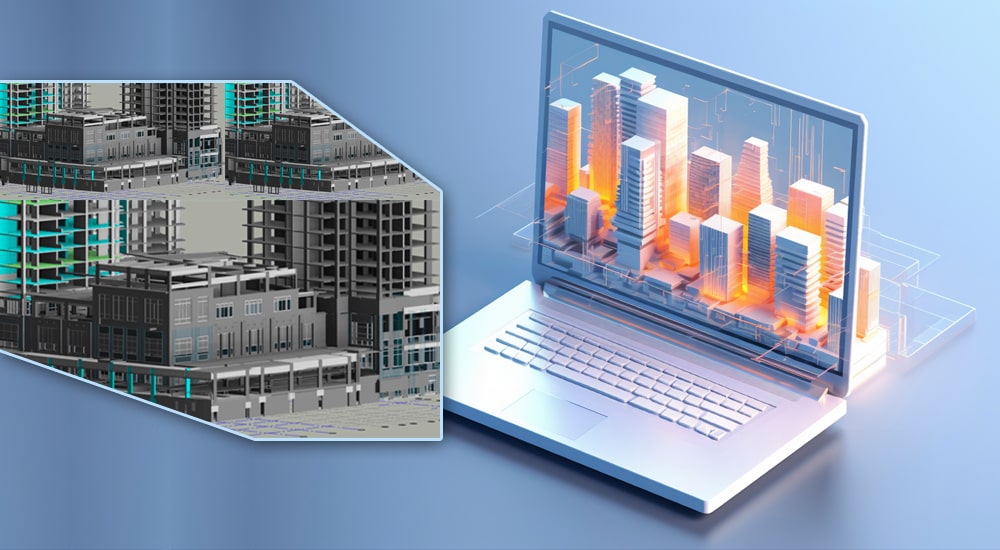
Building Information Modeling has transformed the architecture, engineering, and construction (AEC) industries by providing a comprehensive approach to managing the entire lifecycle of a building. From the initial design phase to the eventual demolition, BIM facilitates collaboration, improves efficiency, and enhances decision-making. This article explores how BIM integrates into each stage of a building's lifecycle, demonstrating its value and importance in modern construction.
1. Design Phase: Visualization and Collaboration
The design phase is critical in determining the functionality and aesthetics of a building. BIM allows architects and engineers to create detailed 3D models that visualize the project, enabling stakeholders to understand the design more intuitively than traditional 2D drawings.
Key Benefits:
- Enhanced Visualization: Stakeholders can explore the design in a virtual environment, making it easier to identify potential issues early in the process.
- Collaboration: BIM fosters collaboration among architects, engineers, and clients. Real-time updates allow all parties to access the latest information, ensuring everyone is on the same page.
- Design Alternatives: Using BIM, teams can quickly generate and evaluate design alternatives, optimizing for functionality, aesthetics, and cost.
2. Pre-Construction Phase: Planning and Coordination
Once the design is finalized, the pre-construction phase focuses on planning and coordination. BIM plays a crucial role in integrating various systems and disciplines to create a cohesive plan for construction.
Key Benefits:
- Clash Detection: BIM helps identify conflicts between different systems (e.g., electrical, plumbing, HVAC) before construction begins, reducing costly rework and delays.
- Scheduling: By incorporating time as a fourth dimension (4D BIM), teams can visualize the construction schedule alongside the model, enhancing project planning and coordination.
- Cost Estimation: BIM enables accurate quantity take-offs and cost estimates, allowing for better budgeting and financial planning.
3. Construction Phase: Execution and Monitoring
During the construction phase, BIM continues to provide value by facilitating execution and monitoring of the project. Real-time data and models can be used to ensure the construction aligns with the design intent.
Key Benefits:
- On-Site Coordination: Construction teams can reference the BIM model on-site, ensuring that installations are performed correctly according to specifications.
- Progress Tracking: BIM allows project managers to monitor progress against the construction schedule, identifying any delays or issues early.
- Quality Control: By using the model as a reference, teams can maintain high standards of quality, ensuring that each component meets the design criteria.
4. Operation Phase: Facility Management and Maintenance
After construction is complete, the building enters the operation phase, where BIM continues to add value through effective facility management and maintenance.
Key Benefits:
- Asset Management: BIM provides a comprehensive database of building assets, including equipment specifications, maintenance schedules, and warranties. This information is invaluable for facility managers.
- Space Management: BIM allows facility managers to optimize the use of space, helping to plan for future modifications or expansions.
- Energy Management: Integrated building systems can be monitored through BIM, allowing for ongoing energy efficiency assessments and adjustments.
5. Renovation Phase: Adaptation and Improvement
As buildings age, they often require renovations or adaptations to meet changing needs. BIM facilitates this process by providing accurate existing conditions and design options.
Key Benefits:
- As-Built Documentation: BIM can be updated to reflect the as-built condition of the building, ensuring accurate information for future renovations.
- Scenario Analysis: Teams can use BIM to model different renovation scenarios, evaluating their impact on functionality, costs, and timelines.
- Stakeholder Engagement: Visualizations generated through BIM help engage stakeholders in the renovation process, ensuring their needs and concerns are addressed.
6. Demolition Phase: Sustainable Practices and Planning
Finally, when a building reaches the end of its lifecycle, BIM can aid in the demolition process, promoting sustainable practices and efficient planning.
Key Benefits:
- Deconstruction Planning: BIM helps teams plan for deconstruction rather than demolition, allowing for the salvage and recycling of materials.
- Waste Management: By visualizing the materials involved, teams can develop effective waste management strategies, reducing environmental impact.
- Safety Planning: BIM enables the identification of potential hazards associated with demolition, contributing to safer worksite practices.
Conclusion
BIM is a powerful tool that enhances every phase of a building's lifecycle, from design to demolition. Its ability to foster collaboration, improve efficiency, and support informed decision-making makes it invaluable in today’s construction landscape. As the industry continues to embrace digital transformation, the role of BIM will only become more significant, paving the way for smarter, more sustainable buildings.
By understanding the comprehensive benefits of BIM throughout the lifecycle of a building, stakeholders can make informed decisions that lead to successful project outcomes, ultimately shaping the future of construction for the better.





